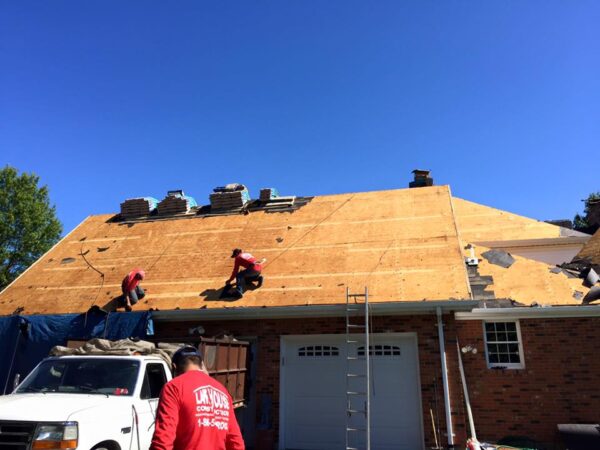 A new roof is a significant investment in your home, so it’s essential to understand how to protect that investment with a strong roofing warranty. A roofing warranty not only provides peace of mind but also safeguards you from unexpected expenses if something goes wrong. While all warranties offer some level of protection, they aren’t all created equal. Here’s a guide on what to look for in a roofing warranty to ensure your new roof will stand the test of time.
A new roof is a significant investment in your home, so it’s essential to understand how to protect that investment with a strong roofing warranty. A roofing warranty not only provides peace of mind but also safeguards you from unexpected expenses if something goes wrong. While all warranties offer some level of protection, they aren’t all created equal. Here’s a guide on what to look for in a roofing warranty to ensure your new roof will stand the test of time.
1. Types of Warranties: Manufacturer vs. Contractor
Roofing warranties generally come in two types: manufacturer warranties and contractor workmanship warranties. Manufacturer warranties cover defects in the roofing materials themselves. These are usually offered by the company that made the roofing materials, like shingles or metal panels, and protect you if the materials fail prematurely. Contractor workmanship warranties, on the other hand, are provided by the roofing contractor who installs your roof. These warranties cover issues related to the quality of installation, like improper placement of shingles or flashing issues that could lead to leaks. To be fully protected, make sure you have both types of warranties in place.
2. Coverage Periods and What They Mean
The length of warranty coverage varies greatly, with typical manufacturer warranties lasting between 20 to 50 years. However, it’s essential to understand that many warranties are “prorated,” meaning coverage may decrease over time. Some higher-end warranties offer non-prorated coverage, which means your roof is fully covered for the entire term. For contractor workmanship warranties, coverage typically lasts from 1 to 10 years. Look for warranties that offer as much coverage as possible within your budget—longer non-prorated terms generally indicate a strong warranty.
3. Transferability of the Warranty
If you plan to sell your home in the future, a transferable roofing warranty could be a big selling point. Transferable warranties allow the new homeowner to benefit from the same coverage without additional fees. However, not all warranties are transferable, so check with your roofing contractor or manufacturer about this option if you anticipate a move within the warranty period.
4. Exclusions and Limitations
Every roofing warranty includes exclusions—specific conditions or issues it won’t cover. Common exclusions can include damage caused by severe weather (like hail or hurricanes), structural damage due to home settling, or issues stemming from inadequate roof ventilation. Make sure to carefully review these exclusions so you understand what’s covered and what isn’t. It’s always a good idea to discuss any exclusions with your contractor to clarify what you might need to address separately.
5. Maintenance Requirements
Some warranties include maintenance requirements to keep coverage valid. Regular roof inspections, cleaning debris from gutters, and addressing minor issues as they arise can be necessary to maintain the warranty. Ignoring these maintenance steps could void your warranty, leaving you unprotected if something goes wrong. Ask your contractor about any maintenance requirements, and keep detailed records of any inspections or repairs to ensure you’re covered if you ever need to make a claim.
Final Thoughts
A solid roofing warranty is an important layer of protection for your investment, providing assurance that your roof will withstand the elements and serve your home for years. By understanding the different types of warranties, coverage periods, transferability, exclusions, and maintenance requirements, you can choose the best warranty for your needs. Partnering with a reputable roofing contractor who offers comprehensive warranties can further ensure you’re covered, no matter what comes your way.




